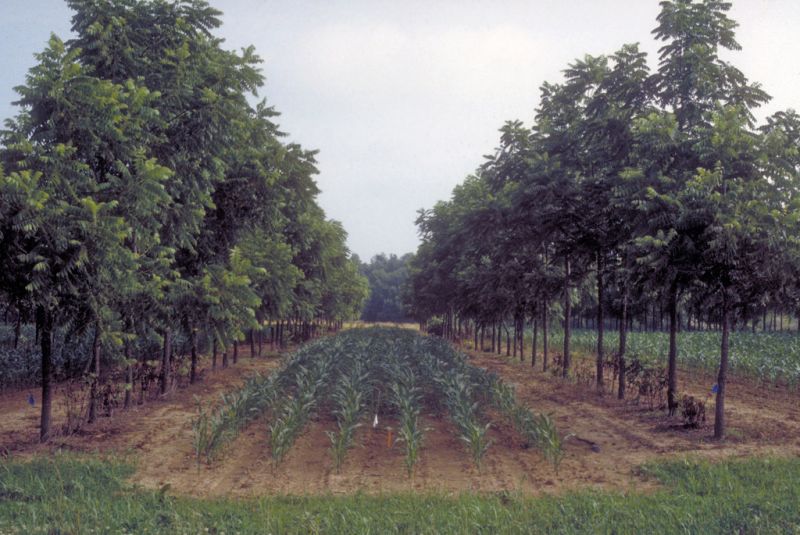Agroforestry Systems May Play Vital Role in Mitigating Climate Change
Published on by Water Network Research, Official research team of The Water Network in Academic
Agroforestry could play an important role in mitigating climate change because it sequesters more atmospheric carbon in plant parts and soil than conventional farming, according to Penn State researchers.
An agricultural system that combines trees with crops and livestock on the same plot of land, agroforestry is especially popular in developing countries because it allows small shareholder farmers — who have little land available to them — to maximize their resources. They can plant vegetable and grain crops around trees that produce fruit, nuts and wood for cooking fires, and the trees provide shade for animals that provide milk and meat.

Agroforestry, representative image, Source: Flickr, Author: NAC, Labeled for Reuse
The researchers analyzed data from 53 published studies around the world that tracked changes in soil organic carbon after land conversion from forest to crop cultivation and pasture-grassland to agroforestry. While forests sequester about 25 percent more carbon than any other land use, agroforestry, on average, stores markedly more carbon than agriculture.
The transition from agriculture to agroforestry significantly increased soil organic carbon an average of 34 percent, according to Michael Jacobson, professor of forest resources, whose research group in the College of Agricultural Sciences conducted the study. The conversion from pasture/grassland to agroforestry produced soil organic carbon increases of about 10 percent, on average.
"We showed that agroforestry systems play an effective role in global carbon sequestration, involved in carbon capture and the long-term storage of atmospheric carbon dioxide," he said. "The process is critical to mitigating or deferring global warming."
However, carbon was not stored equally in different soil levels, noted lead researcher Andrea De Stefano, a graduate student at Penn State when the study was done, now at Louisiana State University. He pointed out that the study, which was published in December in Agroforestry Systems, provides an empirical foundation to support expanding agroforestry systems as a strategy to reduce atmospheric carbon dioxide concentration and mitigate climate change.
"The conversion from forest to agroforestry led to losses in soil organic carbon stocks in the top layers, while no significant differences were detected when deeper layers were included," De Stefano said.
"On the other hand, the conversion from agriculture to agroforestry increased soil organic carbon stocks at all levels, in most cases. Significant increases were also observed in the transition from pasture/grassland to agroforestry in the top layers, especially with the inclusion of perennial plants in the systems, such as in silvopasture and agrosilvopastoral systems."
There is evidence that forests are great storages of carbon compared to agricultural systems, Jacobson conceded, and it was suspected that agroforestry lies somewhere in between, in terms of carbon sequestration, but this research is the first to document the differences.
Government programs in some countries in the tropics — such as Brazil, Indonesia and Kenya — are paying farmers to grow trees on their land to mitigate climate change, Jacobson pointed out. And that strategy is widely embraced because farming systems are much more integrated in the tropics where farmers are poorer and the economic benefits are often desperately needed.
Read full article: Penn State
Media
Taxonomy
- Agriculture
- Sustainable Agriculture
- Climate Change
- Climate Change Adaptation
- Climate Change Resilience
- Consumption
- Agronomy
- Forestry
- Forest Conservation
- Forest Restoration